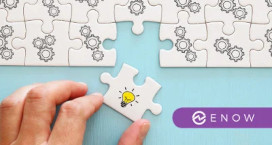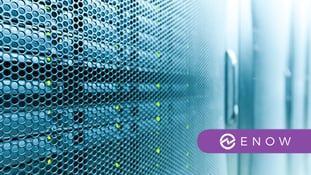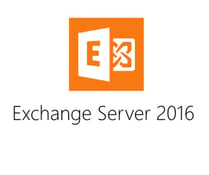The 7 Deadly Sins of Exchange Server Backups
A career-defining moment for many IT professionals is the day that their customer requests some...


The best way to learn about any technology, and specifically Exchange Server, is to be as hands-on as can be. And the most effective way to be hands-on without risking your production environment is to build a separate test lab.
Quickly spinning up a test lab may or may not be that easy. Sure, you might need approval and budget for a new test lab, but there is a high chance your request will get denied. Even if you do get approval and budget, you likely will have to share the lab environment with others on your team or even different business units. This outcome usually means less time to try things yourself, and more rules and restrictions on how the lab environment can be used.
Having your own private test lab environment is the best approach to expanding your Exchange Server knowledge and maturity. So how do you get started?
When you read documents like the Preferred Architecture it is easy to think that every Exchange deployment needs to be highly available and site resilient. But the Preferred Architecture represents just one recommendation about how to deploy Exchange 2016.
In reality, many Exchange 2016 deployments consist of just a single server. And for your test lab environment you can easily deploy a single server, and get access to most of the features of Exchange (excluding the high availability features of course) to begin learning how to perform administrative tasks.
The simple scenario that I recommend is:
The client is optional, because if you did not have enough resources to run that many virtual machines you could install Outlook on the domain controller and connect to mailboxes from that computer, or just use OWA (Outlook on the web) any time you need to access a mailbox.
Any mid- to high-end laptop or desktop computer bought within the last year should have a fast enough processor (any Intel i7 CPU would be sufficient) to run some virtual machines.
For memory, I recommend at least 16GB in your host machine. This gives you enough to allocate at least 6GB to Exchange, and then 3-4GB each to the domain controller and client machine.
Exchange servers can’t use dynamic memory, but the other virtual machines can. Even in a test lab, dynamic memory for an Exchange VM results in horrible performance, so just don’t bother trying.
For storage, an SSD drive is essential. If you have a computer with multiple drives the SSD can be used for the Exchange VM, whereas SATA drives are usually good enough for the other VMs.
I can fit a simple test lap scenario onto my laptop or desktop, but if you're looking at building dedicated computer then take a look at the guides that Exchange MVP Jeff Guillet has written for his own test lab servers.
To truly understand the impact of administrative changes you make in your Exchange test lab, you should log on with normal user accounts and connect to Exchange mailboxes with clients such as Outlook and mobile devices. Installing Outlook on the client machine, or the domain controller if necessary, is simple enough.
Mobile devices get a little trickier. Mobile devices will connect via the LAN if your DNS is configured to resolve the Exchange URLs to your local IP addresses. But you might also want to have them connect via the internet for more realism.
This brings into play several important elements of a real world Exchange 2016 deployment – namespaces, DNS, certificates, and firewalls. So I do recommend you try to get full, external access to Exchange 2016 working in your test lab at some stage. It will be a very educational exercise.
I have already mentioned certificates as an important element in successful mobile connectivity. But certificates play a role in pretty much every client connection to Exchange 2016, because it is all happening over HTTPS or other secured protocols.
Though it may be tempting to try and disable certificate requirements, or just use the self-signed SSL certificate that Exchange generates, it is definitely worth your while gaining an understanding of how SSL certificates work with Exchange. You will be dealing with it constantly in the real world.
You can install the Certificate Services role on your domain controller and issue free certificates for Exchange from that CA, but they will not work well for your mobile devices. Fortunately, several certificate authorities sell very inexpensive certificates, so you can buy a cheap wildcard certificate if you really need to without going to any major expense.
An Exchange 2016 test lab is not much use if it just sits their idle. You need to get hands-on and do real world administrative tasks with it.
Here is a more detailed list of scenarios to tackle in your test lab:
I will not tell you how to actually do those things. You will find documentation and tutorials online with a few simple searches, and then become familiar with how those tasks are performed by practicing them in your lab.
Having a test lab will open up a range of new learning possibilities for you. Always wanted to learn PowerShell? Now you have an environment to start, and not just for Exchange, you can also learn PowerShell for Active Directory, Windows Server itself, and many other features of the operating system.
You could also look at setting up a Hybrid deployment with Office 365. This gets a bit tricky if you do not have the certificates and firewall access that Hybrid depends on, but if you can meet those requirements then definitely go ahead and grab a trial Office 365 tenant to play around with as well.
But ultimately, a test lab environment will be a very good investment of your time and money to grow your Exchange administrative skills, and improve your career.
On-premises components, such as AD FS, PTA, and Exchange Hybrid are critical for Office 365 end user experience. In addition, something as trivial as expiring Exchange or AD FS certificates can certainly lead to unexpected outages. By proactively monitoring hybrid components, ENow gives you early warnings where hybrid components are reaching a critical state, or even for an upcoming expiring certificate. Knowing immediately when a problem happens, where the fault lies, and why the issue has occurred, ensures that any outages are detected and solved as quickly as possible.
Access your free 14-day trial of ENow’s Exchange Hybrid and Office 365 Monitoring and Reporting today!

AmyKelly Petruzzella is a marketing executive who focuses on Microsoft Exchange, Office 365, and Active Directory trends, challenges, and business outcomes for enterprises. Over the years, AmyKelly regularly engages with Gartner industry analysts, and she has been recognized several times for Top 50 Microsoft Marketing Excellence. She is a frequent speaker and blogger and an industry veteran who advocates for women in technology.


A career-defining moment for many IT professionals is the day that their customer requests some...


The best way to learn about Exchange Server is to get hands-on with the product. And the best way...